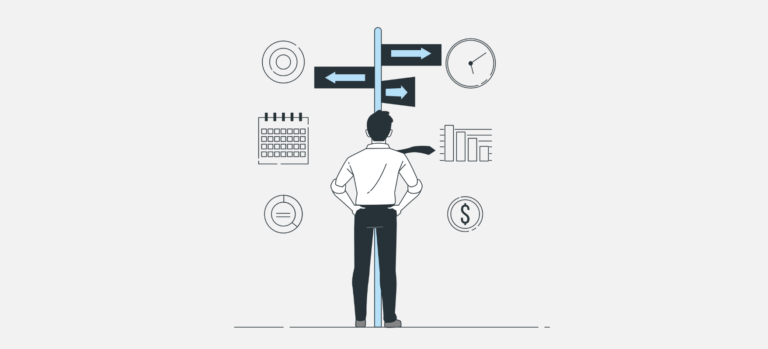Why should a self-employed person have a 2nd pillar?
In Switzerland, self-employed workers are not required to contribute to the 2nd pillar (occupational pension). This particular status gives them significant freedom, but also a great deal of responsibility when it comes to financial security and risk management, as they must handle their own pension planning.
While most people prioritize pillar 3a for its flexibility and tax advantages, a voluntary 2nd pillar can also be highly effective in a pension strategy, especially for those with stable incomes who want to optimize their taxes through fully deductible buy-ins, while securing a lifetime pension.
BVG 2025 figures
- The entry threshold for BVG affiliation is CHF 22,680
- The coordination deduction amounts to CHF 26,460
- The minimum coordinated salary is CHF 3,780
- The maximum insured coordinated salary is CHF 64,260
- The maximum determining AHV salary is CHF 90,720
What are the advantages of a 2nd pillar for the self-employed?
Tax deductions
Contributions made under the 2nd pillar are fully deductible from taxable income. In 2025, a self-employed person can insure a salary of up to CHF 64,260 (mandatory portion), with progressive contribution rates based on age—ranging from 7% to 18%.
In addition, there is the option of making voluntary buy-ins, which are also tax-deductible. These buy-ins increase pension benefits, and the often substantial amounts involved can lead to significant tax savings.
A secure retirement option
One of the main advantages of the 2nd pillar is the life annuity it offers. Unlike Pillar 3a, which is generally paid out as a lump sum on retirement (with the risk of having to manage it yourself over several decades), a Pillar 2 pension is paid for life, regardless of the number of years lived after retirement.
It's a form of psychological and financial security: it protects against the risk of depleting one's resources at an advanced age, especially as life expectancy continues to rise. Moreover, for a self-employed person—whose income often fluctuates—this guarantee of a fixed monthly income is highly valuable. Lastly, spousal and orphan pensions in the event of death ensure continued support for loved ones.
Better protection against risks
The 2nd pillar isn't limited to retirement. It also includes disability insurance and coverage in the event of death. If a self-employed person becomes unable to work, they may receive a disability pension calculated based on their insured salary.
In the event of death, a spouse's pension or lump-sum death benefit can be paid to the designated beneficiaries. This saves the self-employed from having to take out multiple private policies. By centralizing this coverage in a pension fund, you can simplify and secure your pension provision.
Disadvantages of a 2nd pillar for the self-employed
While the 2nd pillar offers definite advantages for self-employed high-income earners, it is not without its limitations.
High contributions
Unlike salaried employees, who share contributions with their employer, self-employed workers pay 100 % of contributions. In 2025, depending on age, this could represent between 7% and 18 % of the insured salary. This represents a substantial financial effort, which can weigh heavily on cash flow, particularly for small structures or irregular activity.
Less flexibility than Pillar 3a
The 2nd pillar operates within a more rigid framework. Contributions are set according to a predefined plan. In contrast, pillar 3a often allows for more flexible investment strategies (index funds, risk profiles, etc.) and more agile management of savings. The pillar 3a is therefore a better solution for self-employed individuals who want more control over how their capital is invested.
Little freedom to choose your pension fund
Unlike salaried employees, you must choose your own voluntary insurance provider. Some liberal professions (architects, lawyers, doctors, etc.) have their own specific funds, which are often well optimized. If you are a member of a trade association affiliated to such an institution, you can contribute to it.
Another option, if you have employees and a pension fund for your business, is to join it personally as a self-employed individual. Finally, if you don’t have access to any pension fund through your network or staff, you can affiliate yourself with the Substitute Occupational Benefit Institution (Fondation institution supplétive LPP). It is required to accept self-employed individuals who are insured under the Swiss AHV/AVS system, even without a prior professional affiliation. This is often considered a last-resort solution, offering decent but typically low-yield benefits.
Loss of advantageous 3a ceiling
By joining the BVG on a voluntary basis, a self-employed person loses the right to pay up to 20 % of his AVS/AHV income in pillar 3a (ceiling set at CHF 36,288 in 2025). They will then be subject to the same ceiling as employees affiliated to a 2nd pillar, i.e. CHF 7,258 in 2025. In so doing, it is giving up one of the best tax levers available to self-employed people without a BVG/LPP.
No freedom in the amount of contributions
In the 3rd pillar, a self-employed person can adjust their contributions each year based on their financial situation. This flexibility does not exist in the 2nd pillar, where contributions are determined by AVS income and the plans set by the pension fund. There is no room to reduce or suspend payments if business slows down.
2nd pillar or 3rd pillar A?
Not sure whether to take out a 2nd or 3rd Pillar A? See our comparison table:
- 2nd pillar (BVG)
- 3rd pillar A
- Affiliation
- Tax allowance (2025)
Deductible contributions (max. salary CHF 64,260)
- Up to CHF 36,288/year if no 2nd pillar
- CHF 7'258/year if with 2nd pillar
- Investment
- Risk protection
- Retirement benefits
- Buybacks and tax optimization
- Ideal for
- Flexible payments
- Insurance: annual adjustment
- Bank: no payment obligation
Conclusion
The 3rd pillar remains the go-to starting point, especially for its flexibility, ease of access, and wide range of investment options. It is ideally suited for self-employed individuals in the early stages of their business or for those with still-fluctuating incomes.
The 2nd pillar, on the other hand, truly comes into its own once annual income becomes stable and substantial. It not only allows for a significant reduction in tax burden but also helps build a secure lifelong pension, something that’s hard to match with purely private products. It also strengthens protection against major risks such as disability or death.
The best approach is to combine the two. Use Pillar 3 A for its flexibility and return potential, while affiliating with a well-structured Pillar 2 to benefit from buy-ins, additional tax deductions, and long-term security. This hybrid strategy allows you to build a solid, optimized and balanced pension plan.





